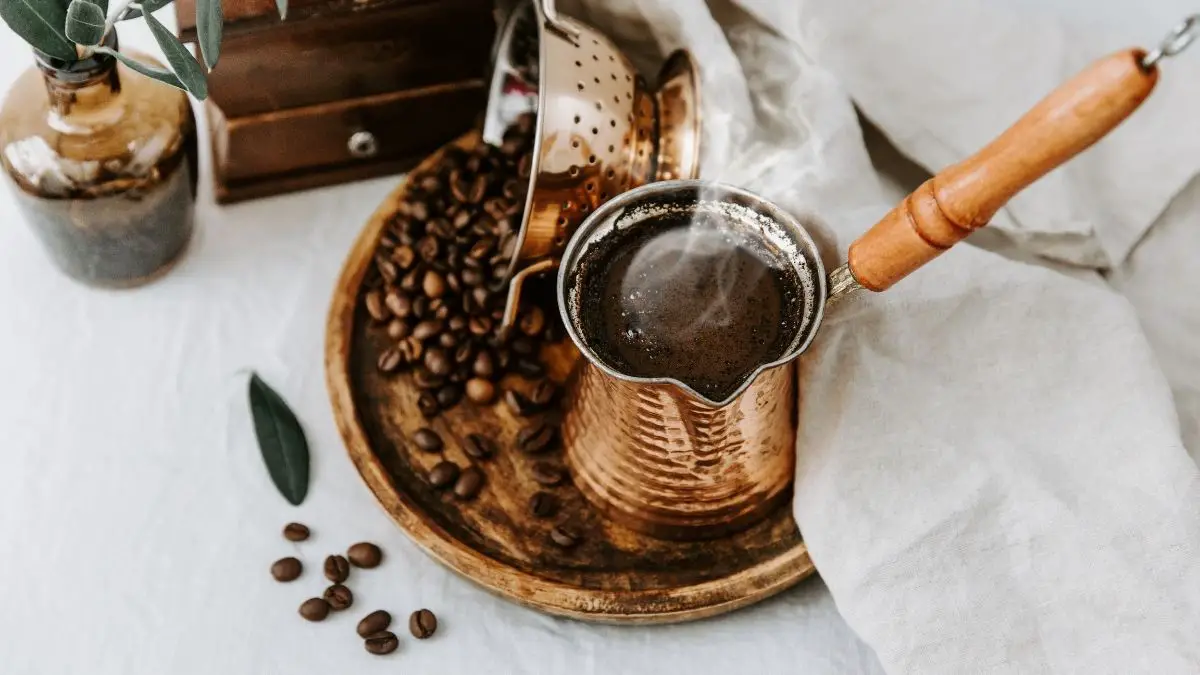If you’re a coffee aficionado who especially likes brewing your cup of filtered joe early, then you’ve experienced those perplexing moments when you’ve run out of paper filters and are in a rush to get your morning perk. Drip or pour-over coffees are very convenient and conventional methods that we humans have been accustomed to for as long as we remember.
This is because when we brew drip, we can do this first thing in the morning and get on with our other routines and when the extraction finally comes to a halt, we can, at last, enjoy our aromatic indulgence. Pour-over coffee on the other hand is much faster as it only requires us to stretch a filter topped with coffee grounds over a mug or cup, and simply pour in some piping hot water to bring out those heavenly aromas and flavors.
However, we may not always have paper filters lying around and this could be just an opportunity to explore other options. So if we can’t filter our coffee, would it be okay to just mix the grounds with hot water and drink it straight? Is drinking unfiltered coffee good and safe?
Originally, coffee was made by steeping the grounds or beans in hot water for a couple of hours, before being poured as a drink, and it wasn’t until the 17th century that filters were introduced to strain the coffee.
So, drinking coffee without filtering and leaving off a few grounds is okay, such as the French press and Turkish coffee method, but it does come with some pros and cons.
Since the paper coffee filter was invented to rid the bitterness of the drink, you can pretty much expect that first of all, unfiltered coffee would taste more bitter and contain more oils than your regular drip or pour, but even those traits can depend on your coffee grounds, how long you brew, and what you mix in your cup.
Turkish Coffee
Turkish coffee is perhaps the ancestor of traditional brewing, but this unfiltered coffee came from a process known as the ibrik (so named for the metal cup it uses) method and is still widely used today. This ancient method is reproduced by mixing the ultrafine coffee grounds, sugar, spices, and water in a metal pot with a long handle used to serve the coffee as is. This mixture is then heated near the boiling point, cooled, and heated again several more times till it achieves ideal consistency.
The coffee beverage is then poured into a cup with a small layer of foam and is meant to be drunk with the undissolved grounds and spices which add texture and taste to the drink. Turkish coffee is quite strong due to its extremely fine grounds, brewing method, and final serving.
To make this at home without an ibrik pot, you can use a saucepan or standard pot instead and use the finest grounds you have. Before heating the water, you have to mix your grounds in already and stir it. Heat it near boiling (don’t let it boil) and a foamy layer will soon appear on top. When this happens, cool the mixture for a bit and repeat the process until you’re satisfied. Remember though, the more you repeat the boiling and cooling process, the more bitter the coffee will become. So keep an eye on that.
Finally, when serving, let the coffee sit still until the grounds settle to the bottom, and then you’ve made yourself a contemporary Turkish coffee.
Espresso Shot
Although you can’t make an espresso shot at home without an espresso machine, manual or automated, it’s still a type of unfiltered coffee that is quick to serve and quick to drink. If you’re near a coffee shop, then you can always count that they serve espresso in two-ounce shots, and you can either drink it straight and immediately receive the punch of strong, nutty flavors and concentrated caffeine, or you can ask for an Americano or cappuccino that helps dilute the boldness of espresso.
An espresso uses fine grounds, almost like powder, but it’s less fine than Turkish grounds.
French Press
The French press actually refers to the apparatus used to press coarse grounds to the bottom of the container, separating them from the coffee liquid, and leaving as few grounds as possible. The coffee extracted from this method is also very strong like the ones mentioned above, but you can mix it with milk and other sweeteners to balance the taste to your preference. You can quickly make this at home so long as you have a French press.
Cowboy Coffee
A boiled coffee popularized by cowboys camping on the trail, and it’s a mixture of course grounds heated with water and poured into a cup after the grounds have settled on the bottom. It’s very easy to make and also comes in fast, but since it’s unfiltered and quite concentrated, it’s also very strong and bitter. So make it if you have the guts for it.
Instant Coffee
The quickest and easiest type of coffee to make. You don’t even need any sort of tools or special brewing methods to make this. A mug, hot water, and a stirrer are all you need for instant coffee.
Though some people would stay away from instant coffee as much as possible due to its acidity and distinctive flavor, and US consumption did dwindle throughout the years, instant coffee is redeemable in its own right since it’s very affordable and easy to make. If you need a super-fast cup of joe without all the equipment and techniques, instant coffee is there for you.
Interestingly, the original frappe was made from Nescafe instant coffee and cold water, and so instant coffee has its merits. It dissolves almost perfectly in any temperature water, this is because the powder itself isn’t ground coffee, but the freeze-dried granules of coffee extract, sweeteners, and sometimes milk. I’m not going to explain the step-by-step process of manufacturing instant coffee, but you can see it here.
Cold Brew
Cold-brew is also pretty easy to make and you won’t be needing any complex equipment either, not even a French Press most of the time. All you need is a jar or a big container with a big mouth, pour in your coarse grounds, and then cold water at a 1:4 or 1:8 ratio in cups. What you would really need in preparing this type of brew is a great deal of patience, as you should brew it around 12 to 16 hours, longer if you’re steeping in a fridge.
One study concludes that within 400 minutes or about 6 hours of cold brewing, much of the caffeine and chlorogenic acids would have been extracted from the grounds, and the type to produce the most of these substances are medium roast, coarse grind. Their concentrations would reach peak levels within 800 minutes or 13 to 14 hours with a standard room temperature (21° to 25° Celsius), and brewing longer than that would extract the bitter flavors of the brew, which is why it’s recommended to cold-brew less than 18 hours.
It’s also good to note that cold brews are generally less acidic than their hot brewed counterparts, and also contain fewer antioxidants, according to another study.
What makes cold brew fascinating is its effortless brewing method. It’s also a great drink for a hot and sunny morning, especially if you’re living by the east coast. You would probably prefer to dilute it in ice and milk before drinking it since cold brew is a coffee concentrate that contains about the same acidity and caffeine content as a hot brew, but also tastes slightly fairer due to its temperature.
You can also use this concentrate for a hot beverage, just add in boiling water and a bit of sweetener to balance its flavor.
Technically, cold brew is unfiltered coffee, because it’s like the cold version of French Press coffee, and you can also produce cold brew using a French Press. You can filter cold brew once you pour the concentrate into another container using a strainer and a cheesecloth, and this is recommended.
Essentially, filtered coffee is putting the grounds onto a filter paper, and pouring hot water to extract the flavors of the coffee blend. In cold brew, you’re extracting the coffee grounds in the water and filtering it later for drinking, much like a French Press.
Unfiltered Coffee And Cholesterol
More so, as I’ve said earlier, the paper filter was invented to minimize or rid the bitterness of coffee, and there’s science behind that. Two lipids or oils, cafestol, and kahweol are known to introduce the bitter notes of a coffee drink, and they’re also notorious for their relation with cholesterol, however, whether it’s LDL, HDL, or total cholesterol, is still up for research.
With a paper filter, these compounds are kept from seeping into the drip, thus preventing their effects. According to a 20-year observational study in Norwegian volunteers, people who drank unfiltered brew had higher and earlier mortality rates than those who drank filtered, and those who did not drink any coffee were found to have slightly greater mortality than those who drank the filtered brew.
So there’s significant evidence that cafestol and kahweol can raise cholesterol levels, but there are too many variables in free volunteers that can account for their mortality. Unless you actually create a controlled system of people only drinking filtered or unfiltered coffee, you cannot get sufficient results in relation to a person’s coffee preference, since lifestyles and diets play the ultimate roles in a person’s health.
So, are unfiltered coffees bad? Well, another research identifies that there’s 7.2 mg/cup of each substance in boiled coffee, ones with grounds like cowboy coffee. Continuing, 3 to 6 mg of cafestol in French press coffee, 1 mg in espresso, and 0.2 mg in filtered. These may still vary depending on the roast and brewing.
However, one study suggests that it would take 73 mg of purified cafestol a day for six weeks to increase your cholesterol by 66 mg/dL, which is very dangerous, but that’s not a normal daily intake and would take you 73 shots of espresso to get there, and apparently, caffeine overdose is more likely to kill you by then.
So, drinking unfiltered coffee once or twice a day isn’t at all dangerous nor worrisome, and a few tips from the Medical News Today recommend a healthy diet, proper exercise, stress management, and quitting smoking altogether to keep your cholesterol levels at a minimum. Yes, smoking daily is more likely to kill you than drinking French press daily. They also suggest that cafestol and kahweol may have anti-inflammatory and anti-cancer properties like the rest of the compounds found in coffee.
Bottom Line
It’s fine to drink unfiltered coffee and any other type of coffee that you prefer. The most important things you should worry about are your health and lifestyle. No matter what type of coffee you drink, your habits would ultimately determine how and where you end up, but also, keeping your coffee or caffeine intake per day would also play a part in your health.
As the dietary guidelines recommend drinking about 3 to 5 cups of coffee per day or say no more than 400 mg of caffeine daily, you should follow that to stay on the safe side of being a coffee addict. Remember that other compounds in coffee such as oils and acids are usually found in trace amounts compared to caffeine and chlorogenic acid which have beneficial effects, they’re not too much to worry about.
Enjoy your coffee the way you want it and always remember that too much of anything isn’t always good.

